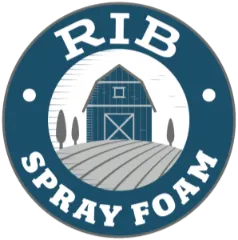Indoor air quality is a vital factor for maintaining a healthy and comfortable living environment. While many people focus on cleaning and ventilation to improve air quality, spray foam insulation offers a less obvious yet powerful solution. This material not only enhances energy efficiency but also plays a critical role in reducing airborne contaminants, allergens, and moisture infiltration. Below, we explore the connection between spray foam insulation and indoor air quality, backed by real-world benefits and actionable insights.
What Is Spray Foam Insulation?
Spray foam insulation is a versatile material applied as a liquid that expands into a solid foam. It comes in two primary types: open-cell and closed-cell foam. Both forms create a strong seal that minimizes air leakage, a major contributor to poor indoor air quality. Unlike traditional materials such as fiberglass, spray foam conforms to irregular spaces, ensuring a thorough barrier.
Why Indoor Air Quality Matters
Indoor air quality directly impacts respiratory health, comfort, and overall well-being. Contaminants like pollen, mold spores, dust, and volatile organic compounds (VOCs) can exacerbate allergies, asthma, and other conditions. Additionally, excess moisture can encourage mold growth, compounding health risks.
How Spray Foam Insulation Enhances Air Quality
Sealing Air Leaks
One of the primary ways spray foam insulation improves indoor air quality is by sealing gaps and cracks where outdoor air, pollutants, and allergens can enter. These leaks often go unnoticed, yet they allow unfiltered air to mix with indoor air, reducing its quality.
Benefits of Air Sealing:
- Reduced Allergens: Pollen, dust, and other airborne irritants are kept out.
- Energy Efficiency: Less outdoor air infiltration means lower heating and cooling demands.
- Temperature Consistency: Prevents drafts and uneven indoor temperatures.
Controlling Moisture
Moisture infiltration is another significant issue affecting indoor air quality. Excess moisture creates a breeding ground for mold and mildew, which release spores into the air. Spray foam insulation’s impermeable properties help control humidity levels by preventing water vapor from entering walls and ceilings.
Moisture Management Highlights:
- Eliminates condensation in vulnerable areas.
- Reduces the risk of structural damage caused by prolonged dampness.
- Improves the lifespan of HVAC systems by lowering humidity-related strain.
Blocking Outdoor Pollutants
Spray foam insulation’s airtight seal prevents contaminants like car exhaust, industrial emissions, and pesticides from entering your home. This is especially beneficial for homes near busy roads or agricultural zones where exposure to outdoor pollutants is higher.
Real-World Example:
Homes with spray foam insulation in urban areas report fewer respiratory issues among residents, as outdoor pollutants have fewer pathways into living spaces.
Reducing VOC Emissions
Unlike some traditional insulation materials, high-quality spray foam is manufactured with low-VOC formulas. This reduces the potential for off-gassing and ensures cleaner air indoors after installation.
Key Considerations:
- Look for products certified for low emissions by organizations like GREENGUARD.
- Proper ventilation during installation ensures even lower VOC levels post-application.
Long-Term Health and Comfort Benefits
Spray foam insulation doesn’t just improve air quality—it sustains it over time. By creating a controlled indoor environment, it reduces exposure to external contaminants, mold, and allergens. Over the years, this translates into fewer health issues, lower medical costs, and a consistently comfortable living space.
Is Spray Foam Insulation Safe?
Safety concerns often arise regarding spray foam insulation, especially during installation. It’s crucial to work with certified professionals who use high-quality materials and follow proper safety protocols. Once cured, spray foam is inert and poses no risk to indoor air quality.
Quick Safety Tips:
- Ensure adequate ventilation during application.
- Allow proper curing time before occupying the space.
- Choose reputable contractors for installation, such as RIB Spray Foam.
Professional Installation: The Key to Better Results
Effective installation is critical for maximizing the benefits of spray foam insulation. Professional installers conduct energy audits, identify problem areas, and ensure a precise application that minimizes air leaks and moisture infiltration.
Why Choose RIB Spray Foam?
With years of expertise, RIB Spray Foam offers reliable, safe, and efficient insulation services. Their team ensures the use of premium materials and modern techniques to deliver long-lasting results. For inquiries, call (970) 518-2883 or email [email protected].
Final Thoughts
Spray foam insulation is more than an energy-efficient solution; it’s an investment in healthier indoor air. By reducing pollutants, moisture, and allergens, it creates a cleaner, safer environment for you and your family. Whether you’re looking to retrofit an older home or enhance a new construction, working with trusted experts like RIB Spray Foam ensures the best results.
Common Questions About Spray Foam Insulation
Does spray foam insulation improve indoor air quality?
Yes, it reduces air leakage, blocks outdoor pollutants, and controls moisture, all of which contribute to cleaner air indoors.
How does it compare to other insulation materials?
Spray foam provides a more airtight seal compared to fiberglass or cellulose insulation. It also lasts longer and offers superior moisture resistance.
Is spray foam insulation worth the cost?
While the initial cost is higher, the long-term energy savings and health benefits often offset the investment.
Can it help with mold prevention?
Yes, by reducing moisture infiltration, spray foam insulation significantly lowers the risk of mold growth.
Is it safe for people with allergies?
Absolutely. Its ability to seal out allergens like pollen and dust makes it a great choice for allergy sufferers.
How long does spray foam insulation last?
Spray foam insulation can last 20-30 years or more with proper installation and maintenance.
Can I install it myself?
DIY installation is not recommended. Professional application ensures the material cures properly and provides maximum benefits.
Does it help with noise reduction?
Yes, spray foam’s density and structure help dampen sound, improving indoor comfort.
What should I expect during installation?
The process involves applying liquid foam to designated areas, which then expands and cures. Proper ventilation is ensured during application, and the space can typically be reoccupied within 24-72 hours.
How do I get started?
Contact RIB Spray Foam at (970) 518-2883 or [email protected] for a consultation and quote.



